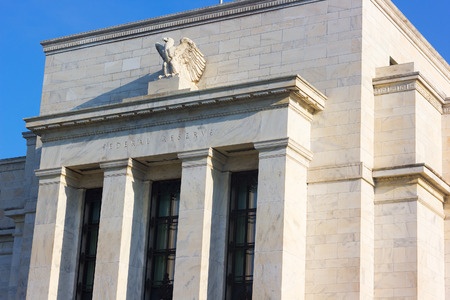Central banks around the world continue to buy gold bullion.
As I noted in a previous post, the world’s central banks purchased a total of 447 tons of gold in 2014 alone. That was the second biggest year for buying gold in the last 50 years. And it represented a 17% increase on purchasing in 2013.
Why the buying frenzy?
There was a direct correlation between gold and debt. In fact, back then, gold played a vital role in controlling national debt.
But not anymore. Today there is no Gold Standard.
Today the central banks of the U.S., Europe and Japan are printing money like there’s no tomorrow. They no longer need to count their gold before printing more money.
So why do the banks even bother to buy and store gold? In a world of fiat currencies, gold has nothing much to do with anything, other than being a rather shiny commodity.
Why the charade? Why pretend that owning a few thousand tons of gold means anything?
At today’s prices the U.S. government’s gold reserves – a little over 8,100 tons – is worth something north of $320 billion.
That’s a big chunk of money. But it certainly isn’t anywhere close to the current U.S. national debt, which sits at about $18 TRILLION.
As I said, there is no direct correlation between gold and debt right now. Not like there used to be.
Which brings us back to the same question: Why do central banks bother to own and store gold bullion? And why are they buying more and more of it, at a faster rate than ever before? What’s their game?
I believe the answer to that question is that the value of a country’s gold reserves COULD be equal to its debt… if the price of gold were to change.
And by change, I mean go up… by a lot.
According to gold expert James Turk, the price of gold would have to go up to about $12,000 an ounce if it were to counter-balance the U.S. debt. I’m not sure how he did the math on that, as it seems to me that the price would have to be even higher.
But if the price of gold did go that high, or higher, it would give countries a way to get out of debt, or at least put a big dent in it.
Gold is liquid. Unlike assets such as farmland or industrial infrastructure, gold can be sold and moved. It can be used like money, to pay down debt.
If this is the reason why central banks continue to buy and store gold, this would support the arguments of those who claim that the price of gold is being manipulated.
Keep the price of gold low while governments buy it. Push it through the roof when they need to sell it to buy down their debt.
Maybe they could never push the price high enough to pay off all their debts. But it could certainly help.
And if that’s the case, and if the price of gold is being kept artificially low during this buying phase, then now is exactly the right time for people like you and me to buy more gold.
If the price is being manipulated, we should be doing our best to piggyback that manipulation to our own advantage.
Buy now and sell later, when the price goes through the roof.
We may no longer have the Gold Standard, but it looks like the correlation between gold and debt still endures in the minds of the world’s central bankers.
About the author: DH Kenrick is a student of world economics and a committed gold enthusiast. Follow me on Google+
You can also follow Owning Gold on Facebook…
The post Is the U.S. planning to pay down its debt with gold? appeared first on Owning Gold.



















